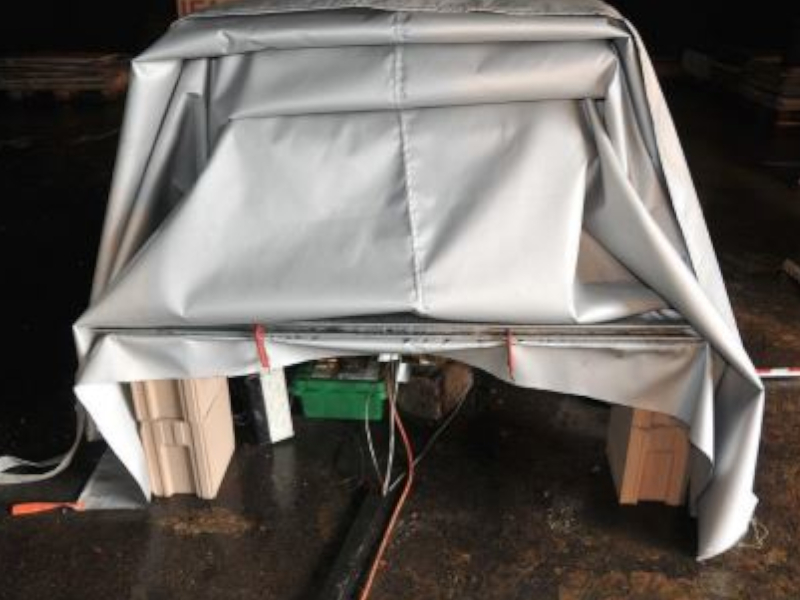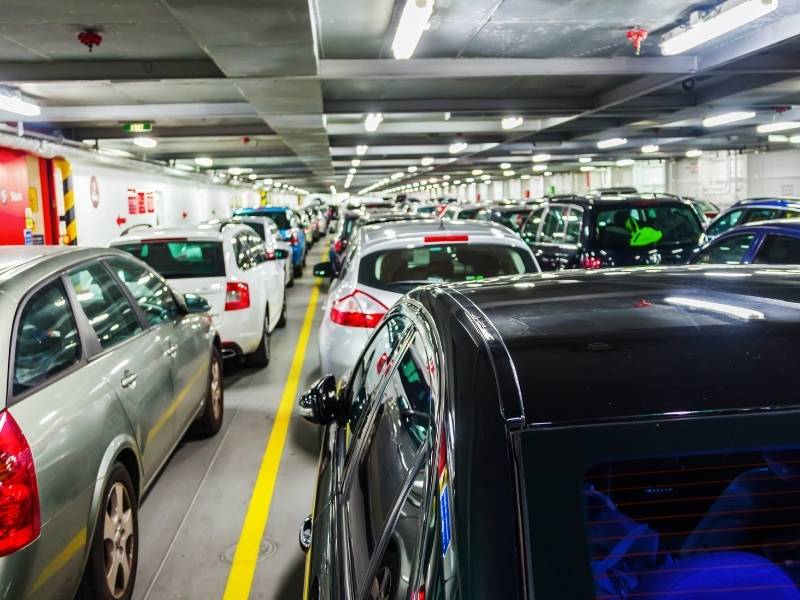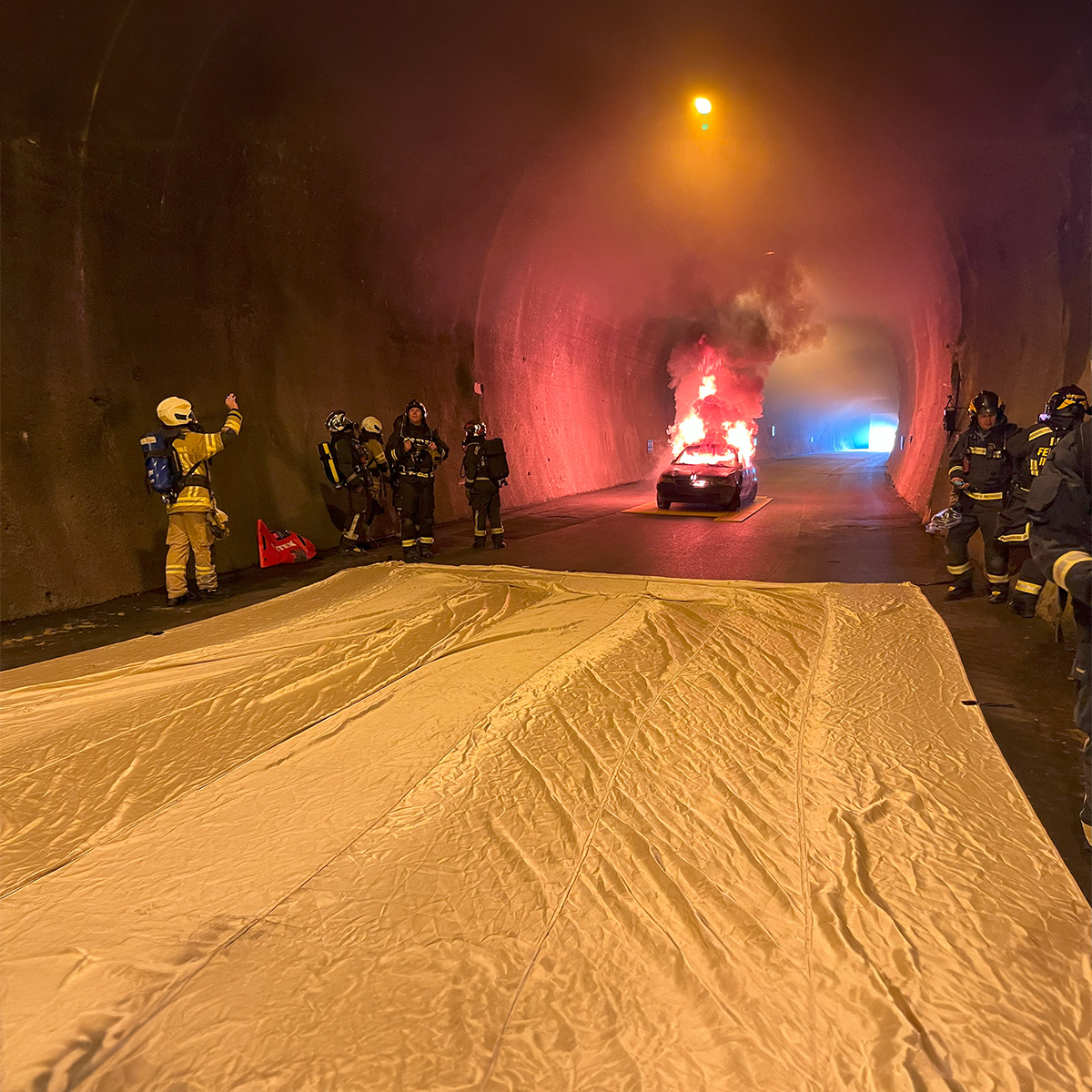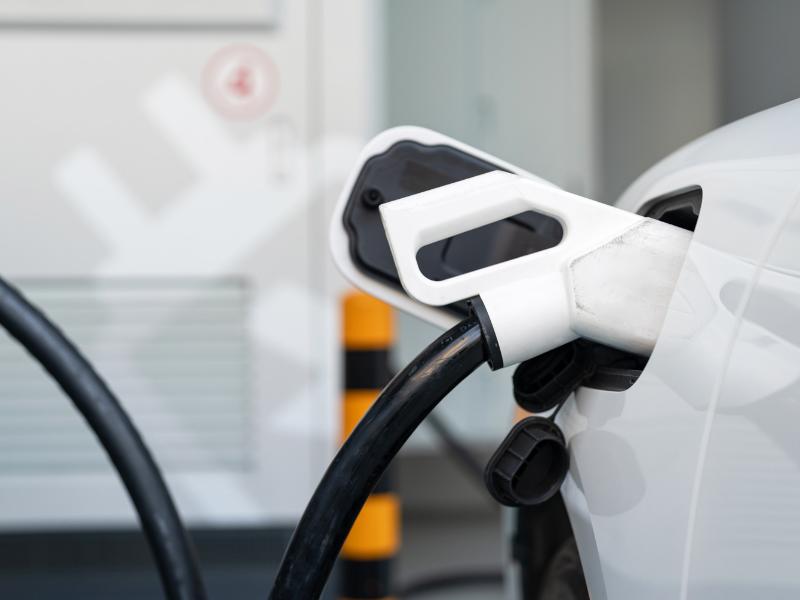
E-cars on ferries
Today, at least one e-car is on board for more than every third ferry trip. And even if battery fires are rare and e-cars do not catch fire more often than conventionally powered vehicles, the steadily increasing number shows one thing: It is necessary to think about possible hazardous situations and to identify options for action. A car ferry brings with it special conditions – narrowness, enclosure, lack of possibilities to involve emergency forces or to isolate damaged vehicles. ALBERO is the project that, with the support of the Federal Ministry of Education and Research, deals with the topic of “Transport of alternatively powered vehicles on RoRo ferries”.
ALBERO, then. An attempt is made to work out a comprehensive assessment of the situation and to consider as many aspects as possible: stand concepts, early hazard detection, loading situation, but also behavior in emergency situations and, in particular, fire fighting. This is where we come in. The cramped conditions in a ferry make firefighting measures difficult. And the sprinkler systems installed in all modern ferries are not sufficient to cool a battery fire enough to prevent or stop the Thermal Runaway.

To investigate the usefulness of fire-limiting measures such as our VLITEX fire blanket, a series of tests was set up with individual battery modules. Two different fire blankets were used (our VLITEX Premium M as well as the model from Leader). In addition, sprinklers were used and different sequences were tried in fighting battery fires. For example, first ceiling, then sprinkler or vice versa. In particular, the question arose as to whether it is possible to stop the thermal runway. In the process, one battery cell ignites the next and the fire can last for hours – usually with increasing dynamics.

The most important findings
- A fire blanket can greatly reduce the spread of the battery fire to other areas of the vehicle. This is explained by the deprivation of oxygen. This is not necessary for the battery fire, because the battery already contains all the necessary components for a fire. The fire of other vehicle parts, however, necessarily needs oxygen from the outside – which you can cut off with the fire blanket.
- The fire blanket prevents the fire from spreading to other vehicles and, most importantly, it keeps flying particles at bay. Exploding battery cells can hurl meters through the air. We have been able to observe this again and again in tests. Really dangerous!
- The fire blanket cannot prevent the individual battery cells from burning out. This is exactly how we describe it: it limits the fire and prevents damage to the surrounding area. It does not extinguish, at least not in the case of a battery fire.
- If, in addition to the fire blanket, sprinklers are also used, there will be a stronger development of smoke and thus also a significantly increased spread of toxic fumes.
- In one test, the fire blanket was damaged by a jet of flame. That was not ours – because it is even certified. Also for battery fires up to 1,300 °C.
We continue to be in contact with the ALBERO consortium, monitoring and promoting findings on the topic. We know that we can provide valuable services with our fire protection blankets. We are curious to see how the approach will develop in practice.
ALBERO PROJECT – SOURCES
VLITEX









